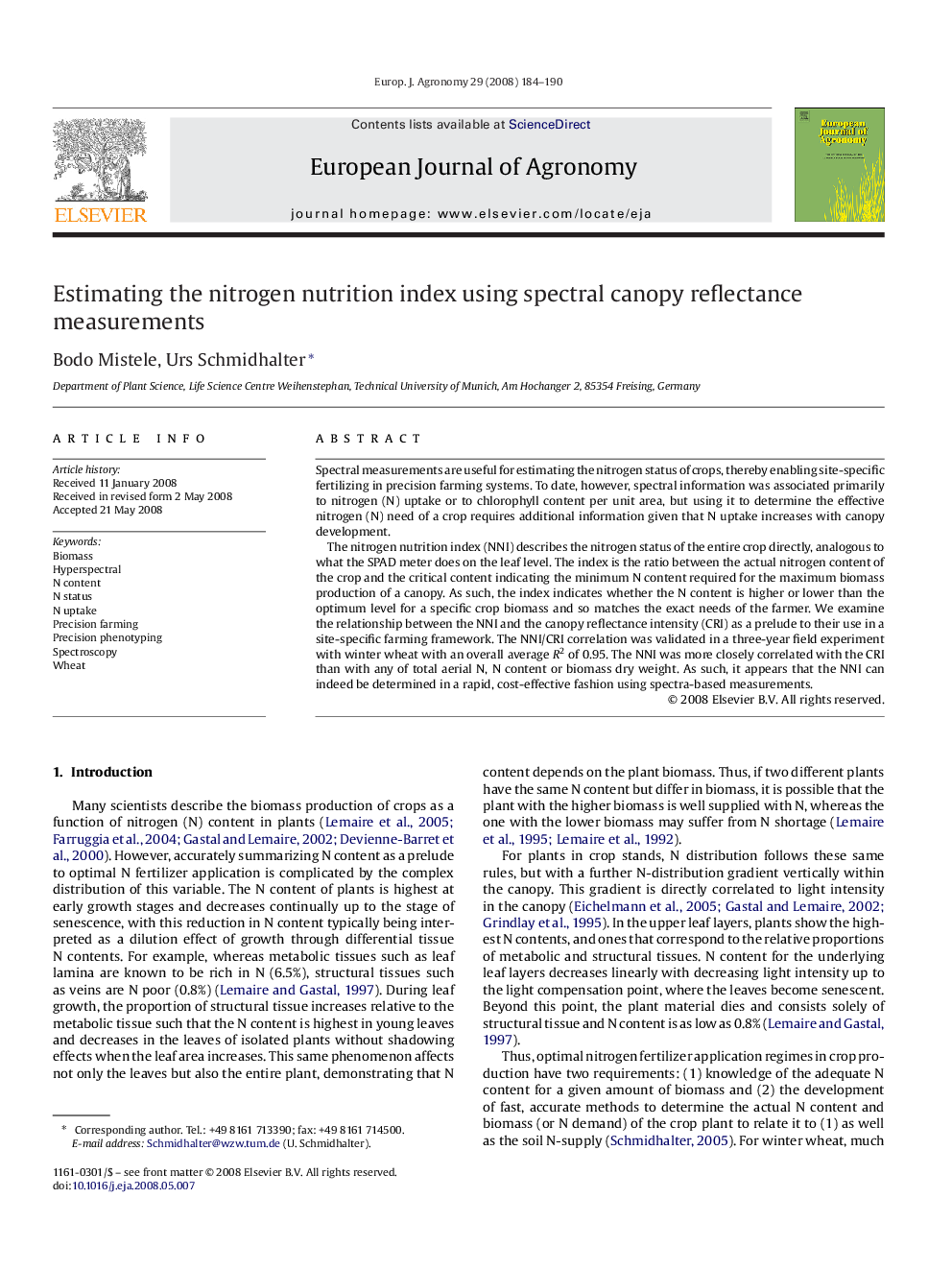| Article ID | Journal | Published Year | Pages | File Type |
|---|---|---|---|---|
| 4509531 | European Journal of Agronomy | 2008 | 7 Pages |
Spectral measurements are useful for estimating the nitrogen status of crops, thereby enabling site-specific fertilizing in precision farming systems. To date, however, spectral information was associated primarily to nitrogen (N) uptake or to chlorophyll content per unit area, but using it to determine the effective nitrogen (N) need of a crop requires additional information given that N uptake increases with canopy development.The nitrogen nutrition index (NNI) describes the nitrogen status of the entire crop directly, analogous to what the SPAD meter does on the leaf level. The index is the ratio between the actual nitrogen content of the crop and the critical content indicating the minimum N content required for the maximum biomass production of a canopy. As such, the index indicates whether the N content is higher or lower than the optimum level for a specific crop biomass and so matches the exact needs of the farmer. We examine the relationship between the NNI and the canopy reflectance intensity (CRI) as a prelude to their use in a site-specific farming framework. The NNI/CRI correlation was validated in a three-year field experiment with winter wheat with an overall average R2 of 0.95. The NNI was more closely correlated with the CRI than with any of total aerial N, N content or biomass dry weight. As such, it appears that the NNI can indeed be determined in a rapid, cost-effective fashion using spectra-based measurements.
